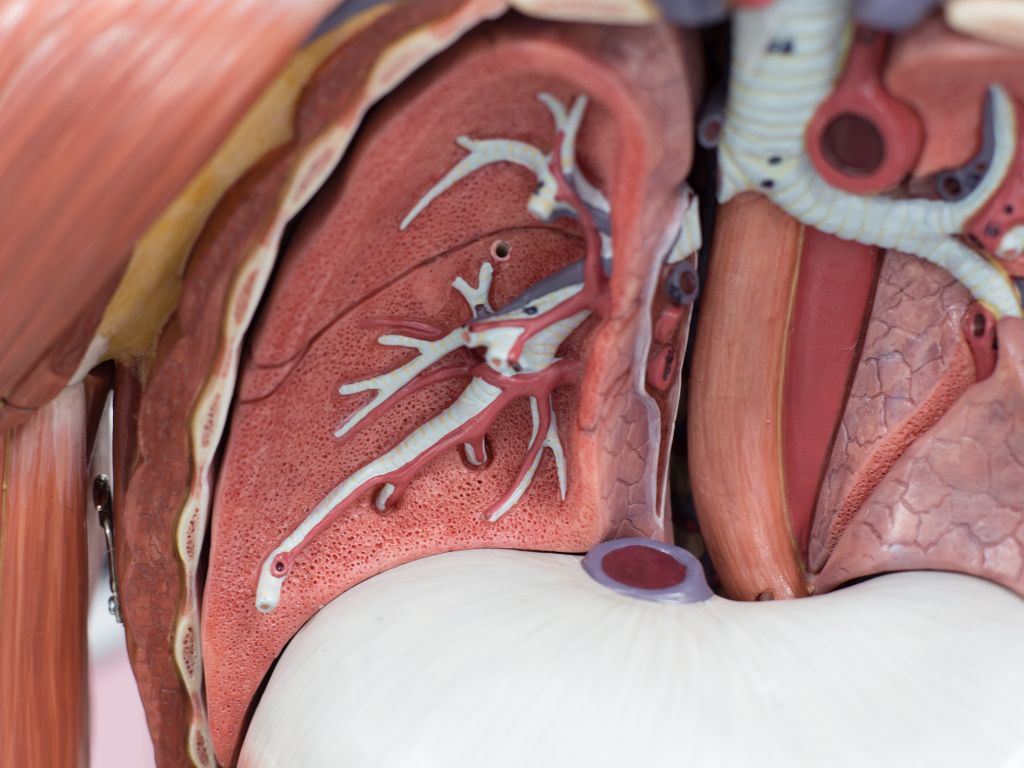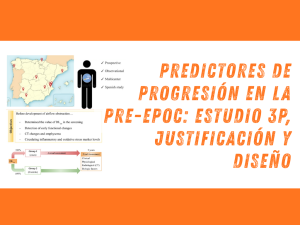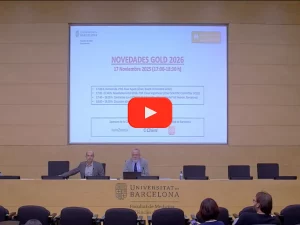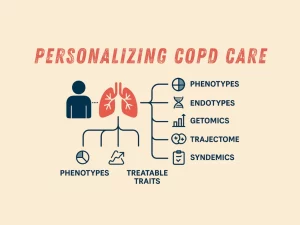Lung Tissue Multi-Layer Network Analysis Uncovers the Molecular Heterogeneity of COPD

Background: Chronic Obstructive Pulmonary Disease (COPD) is a heterogeneous condition.
We hypothesized that the unbiased integration of different COPD lung omics using a novel multi-layer approach may unravel mechanisms associated with clinical characteristics.
Methods
We profiled mRNA, miRNA and methylome in lung tissue samples from 135 former smokers with COPD. For each omic (layer) we built a patient network based on molecular similarity. The three networks were used to build a multi-layer network, and optimization of multiplex-modularity was employed to identify patient communities across the three distinct layers. Uncovered communities were related to clinical features.
Results
We identified five patient communities in the multi-layer network which were molecularly distinct and related to clinical characteristics, such as FEV1 and blood eosinophils. Two communities (C#3 and C#4) had both similarly low FEV1 values and emphysema, but were molecularly different: C#3, but not C#4, presented B and T cell signatures and a downregulation of secretory (SCGB1A1/SCGB3A1) and ciliated cells. A machine learning model was set up to discriminate C#3 and C#4 in our cohort, and to validate them in an independent cohort. Finally, using spatial transcriptomics we characterized the small airway differences between C#3 and C#4, identifying an upregulation of T/B cell homing chemokines, and bacterial response genes in C#3.
Conclusions
A novel multi-layer network analysis is able to identify clinically relevant COPD patient communities. Patients with similarly low FEV1 and emphysema can have molecularly distinct small airways and immune response patterns, indicating that different endotypes can lead to similar clinical presentation.
Authors
Nuria Olvera, Jon Sánchez-Valle, Iker Núñez-Carpintero, Joselyn Rojas-Quintero, Guillaume Noell, Sandra Casas-Recasens, Alen Faiz, Philip Hansbro, Angela Guirao, Rosalba Lepore, Davide Cirillo, Alvar Agustí, Francesca Polverino, Alfonso Valencia, Rosa Faner.
Read more details at
Noticias relacionadas

Predictores de progresión en la pre-EPOC: estudio 3P, justificación y diseño
Conoce el estudio 3P que analiza los factores que predicen la progresión de la pre-EPOC a EPOC en fumadores con espirometría normal.

Vídeo de la Presentación de las Novedades GOLD 2026
Video de la presentación «Novedades GOLD 2026», en el que se trataron, entre otros aspectos: cambios en diagnóstico de la EPOC, tratamiento, comparativa con GESEPOC, etc.

Personalizing COPD care: phenotypes, endotypes, GETomics, the the trajectome, syndemics and treatable traits
Discover how personalized COPD care integrates phenotypes, endotypes, GETomics, trajectome, syndemics, and treatable traits to improve patient outcomes.
Artículos
COPD
- 759578·Alberto Papi et Al.-Relationships between symptoms and lung function in asthma and/or chronic obstructive pulmonary disease in a real-life setting: the NOVEL observational longiTudinal studY
- 759785·Richard Beasley et Al – Prevalence, Diagnostic Utility and Associated Characteristics of Bronchodilator Responsiveness
- 759788·Alvar Agustí, Rod Hughes, Eleni Rapsomaki, Barry Make, Ricardo Del Olmo, Alberto Papi, David Price, Laura Benton, Stefan Franzen, Jørgen Vestbo, Hana Mullerova – The many faces of COPD in real life: a longitudinal analysis of the NOVELTY cohort
- 759883·Alberto Papi, Rosa Faner, Ian Pavord, Federico Baraldi, Vanessa M McDonald, Mike Thomas, Marc Miravitlles, Nicholas Roche, Alvar Agustí. – From treatable traits to GETomics in airway disease: moving towards clinical practice
- 768799·Surya P Bhatt Richard Casaburi Alvar Agusti et Al. Chronic obstructive pulmonary disease: hiding in plain sight, a Statement from the COPD Foundation Medical and Scientific Advisory Committee
Estudios
- 759397·Alberto Sandiumenge et Al.-Systemic Inflammation Differences in Brain-vs. Circulatory-Dead Donors: Impact on Lung Transplant Recipients
- 759578·Alberto Papi et Al.-Relationships between symptoms and lung function in asthma and/or chronic obstructive pulmonary disease in a real-life setting: the NOVEL observational longiTudinal studY
- 759689·Kilian Vellvé et Alt.- Pulmonary vascular reactivity in growth restricted fetuses using computational modelling and machine learning analysis of fetal Doppler waveforms.
- 769273· Singh D, Criner GJ, Agustí A et al. Benralizumab Prevents Recurrent Exacerbations in Patients with Chronic Obstructive Pulmonary Disease: A Post Hoc Analysis
- 769685·Nuria Olvera et Al.- Lung Tissue Multi-Layer Network Analysis Uncovers the Molecular Heterogeneity of COPD
Imagen obtenida en Canva Pro.
